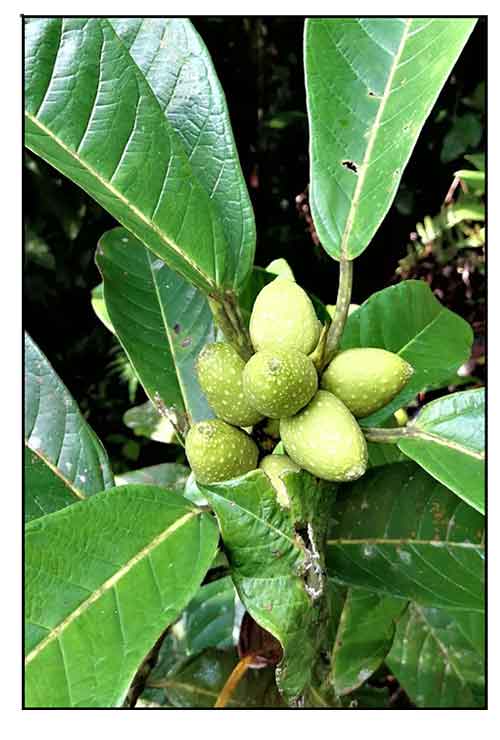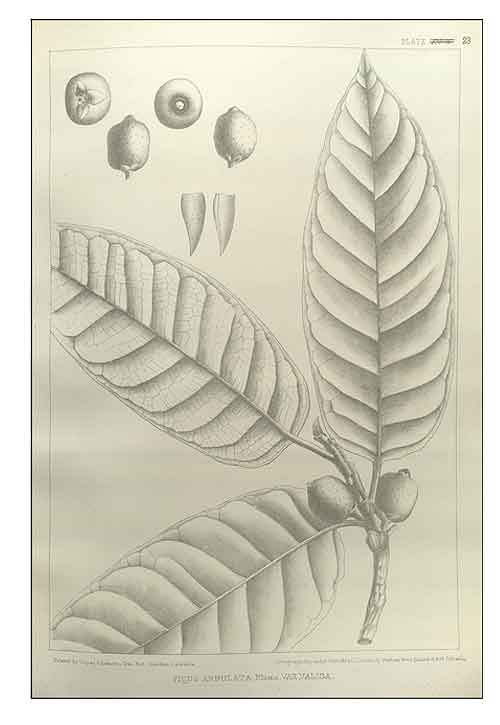
Family • Moraceae
Sininsing
Ficus annulata Blume
RINGED FIG
Huan wen rong
| Scientific names | Common names |
| Ficus annulata Blume | Sininsing (Tagalog) |
| Ficus annulata var. biverrucella (Miq.) Miq. | Ringed fig (Engl.) |
| Ficus annulata var. elliptica Miq. | |
| Ficus annulata var. flavescens (Blume) King | |
| Ficus annulata var. valida (Blume) King | |
| Ficus balabacensis Quisumb. | |
| Ficus flavescens Blume | |
| Ficus valida Blume | |
| Urostigma annulatum Miq. | |
| Urostigma biverrucellum Miq. | |
| Urostigma conocarpus Miq. | |
| Urostigma depressum Miq. | |
| Urostigma flavescens Miq. | |
| Urostigma validum Miq. | |
| Ficus annulata Blume is an accepted species. KEW: Plants of the World Online | |
| Other vernacular names |
| CHINA: Huan wen rong. |
| INDONESIA: Bulu emprit (Javanese), Kiara koneng (Sundanese), Nunu-lewui (Manado, Sulawesi), Krasak, Kiara bodas, Kiara oreng, Bulu, Ara susu, Buntut, Kuap. |
| MALAYSIA: Ara bungkus, Ara kebangan, Ara kubong. |
| MYANMAR: Nyaung-thapan. |
| THAILAND: Hai, Sai. |
| OTHERS: Nizhangde. |
Botany • Frequently confused with F. depressa and F. globosa, the only other large section Conosycea lianas in which the figs ripen green/yellow and are dispersed by bats. The three species are obviously closely related and hybrids might occur.
Constituents Properties Studies Availability |
April 2024
![]()
 |
| PHOTOS / ILLUSTRATIONS |
| IMAGE SOURCE: Ficus annulata at Matang near Kuching / © Uluulublog / Non-commercial use / Click on image or link to go to source page / THE FIGS OF BORNEO |
| OTHER IMAGE SOURCE: Illustration: Ficus annulata / Drawing of fruits and leaves / Annals of the Royal Botanic Garden, Calcutta (1888) G.C.Das / Click on image or link to go to source page / Useful Tropical Plants |
Additional
Sources and Suggested Readings |
• |
DOI: It is not uncommon for links on studies/sources to change. Copying and pasting the information on the search window or using the DOI (if available) will often redirect to the new link page. (Citing and Using a (DOI) Digital Object Identifier) |
| List of Understudied Philippine Medicinal Plants |
| New plant names needed The compilation now numbers over 1,300 medicinal plants. While I believe there are hundreds more that can be added to the collection, they are becoming more difficult to find. If you have a plant to suggest for inclusion, native or introduced, please email the info: scientific name (most helpful), local plant name (if known), any known folkloric medicinal use, and, if possible, a photo. Your help will be greatly appreciated. |
• |
 |


 Distribution
Distribution